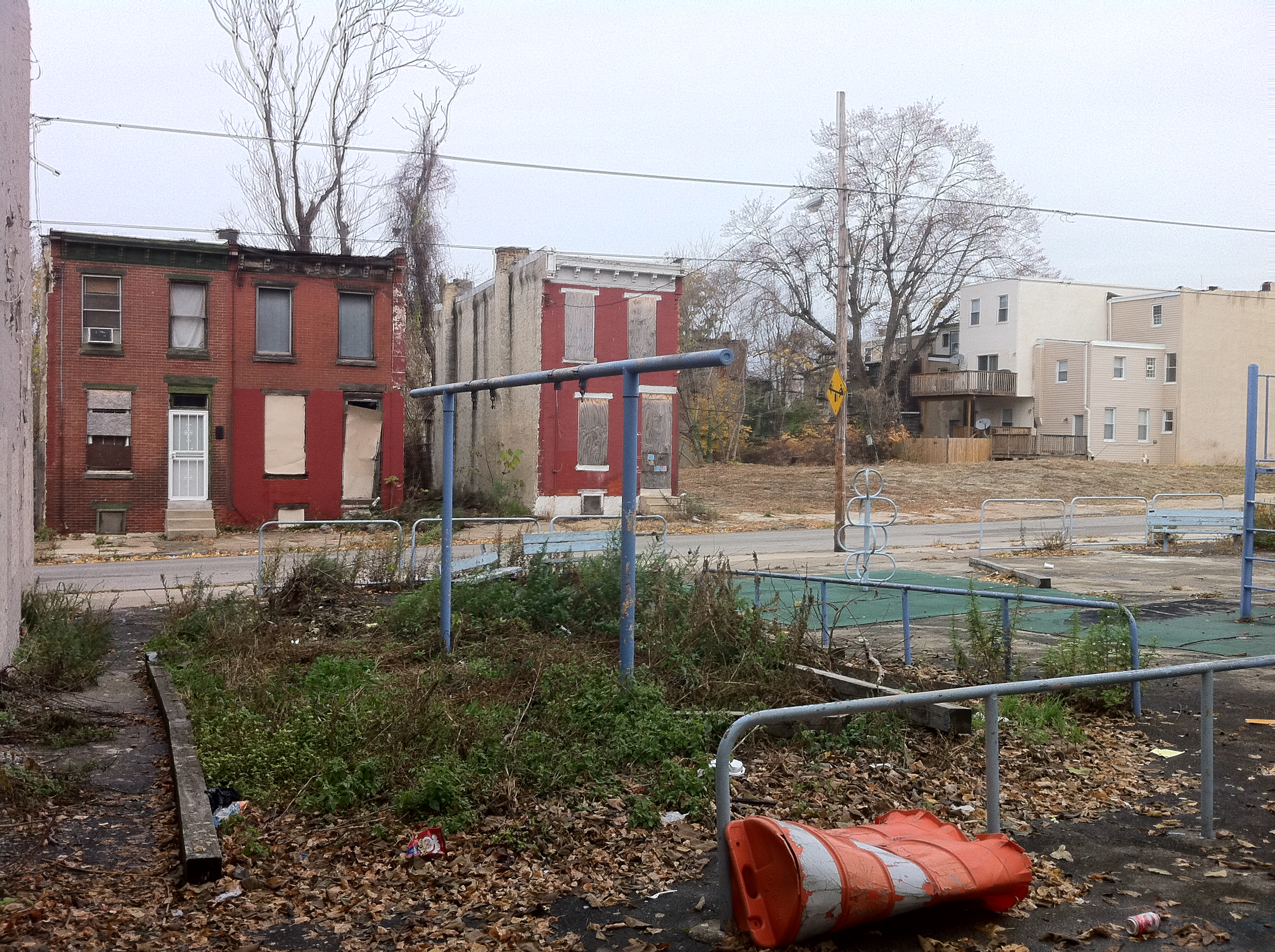Philadelphia recently became the largest U.S. city to create a “land bank.” The news was
picked up by The New York Times, which touted Philly’s approach as a “model for other cities like Detroit.” Land banks have been around for decades, but have become more popular of late. The idea is for cities to play a lead role in taking title to blighted properties that are tax delinquent or where there is no clear title, in order to more effectively convey that land to willing developers, with the goal of revitalizing neighborhoods.
The concept of a land bank makes sense for cities that have a large number of vacant properties. However, alone they are not silver bullets. As new land banks spring up across the country, it is important to take a close look at what needs to accompany them if we want to have real impact on America’s urban landscape.
Turning back the clock: In 2001 Philadelphia launched its $300 million Neighborhood Transformation Initiative (NTI) to reduce blight and rebuild neighborhoods. One of the program’s major goals was, “Improve the City’s ability to assemble and dispose of land for redevelopment and establish a Land Bank…” While NTI had some successes in assembling land for construction of affordable housing, by and large the program’s land bank component was considered less effective than its creators hoped. As NTI was rolling out, a policy report on the program cautioned, “Urban renewal strategies focused primarily on demolition and land assembly have not proven effective.”
In light of the mixed reviews of NTI’s land bank approach a decade ago, what makes us think the current effort will be more effective? To be fair, there is a big difference now, thanks to Pennsylvania’s state enabling legislation that went into effect last year. This legislation gave local governments stronger powers to quickly take title to tax delinquent properties, and to clear liens. If the state had granted these powers years ago, programs like NTI may have been more successful.
Despite its flaws, NTI deserves credit for attempting a multi-faceted, market-based approach to neighborhood planning and investment. NTI was very data-driven, based on analysis of neighborhood demographics and trends. Today’s land-bank boosters should learn from NTI’s flaws, but seek to emulate its strong points by again forging a comprehensive, multi-faceted, and data-driven approach.
One big issue is that land banks depend on developer interest. If the market is weak, it is more challenging to convey properties to willing buyers. The New York Times noted “how rapidly the Land Bank’s appeal will translate into changes from block to block depends greatly on the health and strength of the city’s real estate market.”
In order to stimulate development, we need more than a land bank. We need to increase investment in targeted loan & grant funds, and tax credit programs for urban areas. The City can play a role here, but much of this funding comes from state and federal government programs. Thus, we need to pressure our legislators to strengthen programs like Community Development Block Grants and New Markets Tax Credits.
Another issue is that some speculators sit on vacant and blighted properties for a long time, waiting for values to rise, so they can flip. This problem has a simple solution that is within the City’s grasp: Philadelphia barely taxes land—with our assessment dial turned all the way to taxing property. If we adjust the dial, to tax land and property more equally, it will make it more expensive to sit on blight, and incentivize more rapid redevelopment.
Finally, thriving neighborhoods need strong civic and community organizations. Neighborhoods that lack this type of infrastructure see slower and less strategic investment. Groups like Wells Fargo Regional Foundation have been working for years to empower local community partners. We should focus more resources on local groups in areas targeted for land banking to increase the potential that new development will be in line with a strategic, community-driven approach.
NTI presented a cautionary tale about how politics can get in the way. NTI dollars were divvied up by City Council. What was supposed to be a targeted, data driven approach was eventually watered down by local politics. It’s not a perfect world, and politics are bound to be involved, but as well as we can, we should try to keep the land bank effort insulated from influence by local political fiefdoms.
Philadelphia’s land bank is an important step, but we cannot sit back, relax and watch the magic happen. We need to make sure that the rest of the economic equation makes sense. If we build a full range of programs and incentives for developers, policies that encourage development, empowered community groups, and a land bank with inventory, then perhaps Philadelphia really is on its way to creating a nationally replicable model for success.
Greg Heller is the principal of Urban Direction LLC , a consulting firm specializing in community/economic development, and urban real-estate projects. Heller, has over ten years of experience in neighborhood-based, urban planning and development work. His recent work has focused on shared-use commercial kitchen environments. As Director of The Enterprise Center CDC he managed the development of the Center for Culinary Enterprises, a 13,000 sf incubator kitchen in West Philadelphia. Currently he is managing the development of the Baltimore Food Hub, a 3.5-acre campus in East Baltimore, and carrying out a feasibility study for a kitchen incubator in Cincinnati. In addition, he is managing a national survey of shared-use commercial kitchens carried out by Econsult Solutions.






